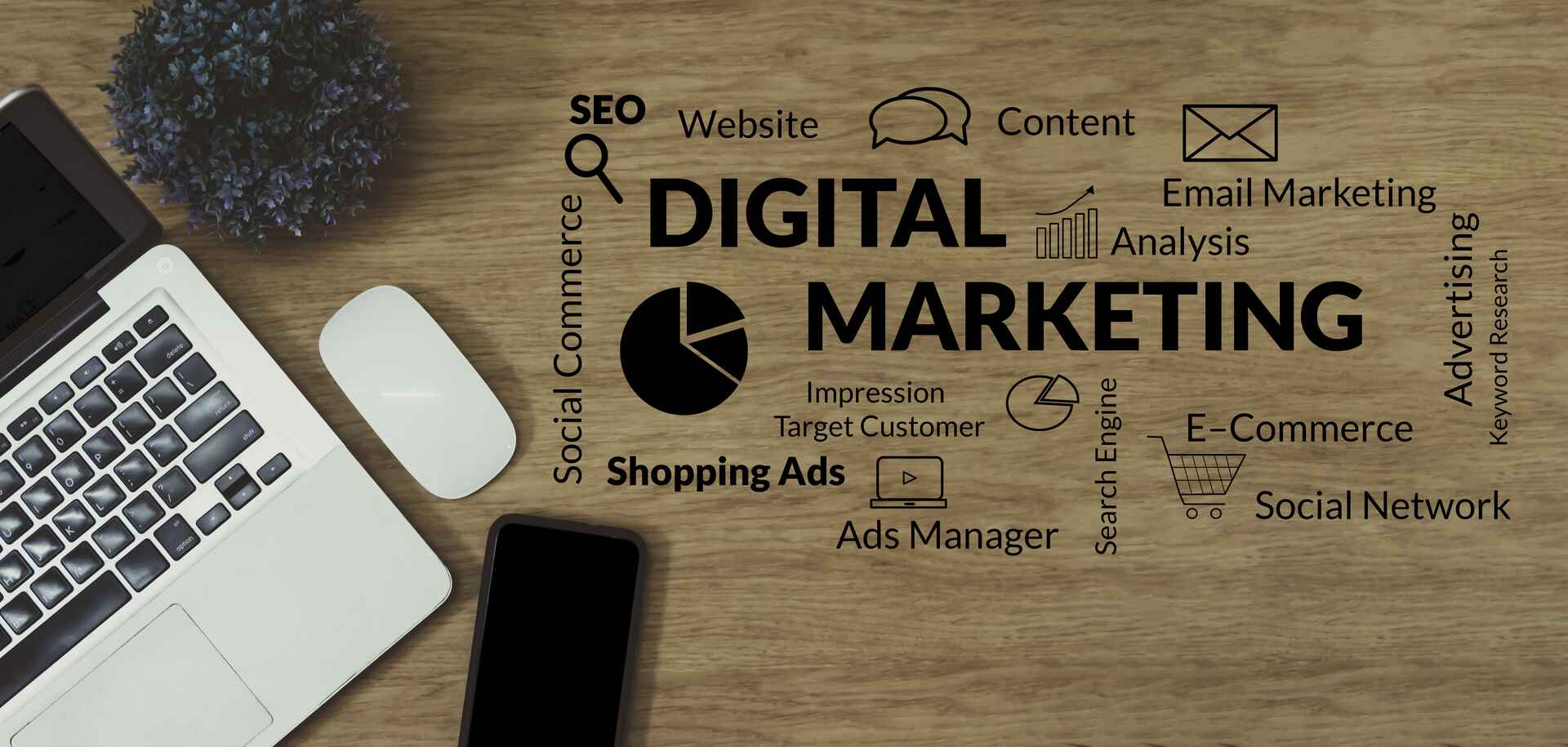Creating a budget-friendly company website doesn’t have to be complicated. With smart choices, you can build a professional-looking site that fits your business needs without spending a lot of money. It’s all about finding the right balance between quality and cost.
From choosing essential features to picking affordable hosting plans, we’ll guide you through every step. Whether you’re considering DIY design or need a custom solution, this article will show you how to create a company website that works for your small business.
1. Prioritising Essential Features

When you’re building a company website on a budget, prioritising essential features is key. Small businesses often get carried away with extra features that can inflate costs unnecessarily. Here’s how you can focus on the most crucial elements.
Responsive Design for All Devices
In today’s digital world, your website must look great on both mobile devices and desktops. A responsive design ensures that visitors can easily navigate your site, no matter what device they’re using. This feature is essential for customer engagement and satisfaction.
Clear Navigation and Structure
Make sure your website has a simple, intuitive navigation system. Visitors should be able to find what they’re looking for within seconds. Clear navigation reduces bounce rates and keeps potential customers on your site longer, which is especially important for small businesses trying to make a good first impression.
Focus on SEO Optimisation
SEO isn’t just for large corporations. By including keywords relevant to your business and location, like “affordable website design in Malaysia,” you can improve your ranking on search engines. Free SEO plugins can help you optimise your content and metadata without additional costs.
Essential Pages to Include
At a minimum, every company website should have a home page, about page, contact page, and a services or product page. These are the basics for any business, ensuring your visitors can easily learn about your offerings and reach out if interested.
Zoomo Tech Tip: We always recommend starting with these essential features for any small business website. This approach keeps things budget-friendly while still delivering the core elements needed for success.
2. Choosing Affordable Hosting Plans

One of the first steps in creating a budget-friendly company website is selecting the right hosting plan. This is the backbone of your website and can greatly impact performance and costs. Here’s how to choose wisely.
Shared Hosting for Small Businesses
Shared hosting is the most affordable option, where your website shares server resources with others. This type of hosting is perfect for small businesses that don’t expect huge traffic initially. It’s cost-effective and sufficient for most new websites.
Look for Local Hosting Providers
Sometimes, opting for local hosting providers in Malaysia or Singapore can offer better support and pricing tailored to the region. Local companies might also provide better customer support, which is crucial for small businesses that need quick assistance.
Uptime and Customer Support
No matter how affordable, a hosting plan isn’t worth it if it compromises uptime and customer support. Look for hosting providers with a 99.9% uptime guarantee and 24/7 customer support. This ensures your website remains functional and accessible to visitors. Still unsure which hosting plan to choose? Contact Zoomo Tech for more advice on selecting the right one.
3. DIY vs. Professional Web Design: What to Consider

When creating a company website, many small business owners wonder if they should go the DIY route or hire a professional. Here’s how to weigh the pros and cons of each approach.
DIY: When It Works Best
DIY website builders like WIX or WordPress are great for small businesses with tight budgets and basic needs. These platforms offer pre-designed templates that are easy to customise without coding experience. However, you may face limitations in functionality and design flexibility.
Professional Web Design: What You Get
Hiring a professional designer or website development company like Zoomo Tech can result in a more refined, customised website. Professionals understand the latest design trends and user experience principles, ensuring that your website looks professional and meets your business needs. However, this option typically comes with a higher cost.
Time Investment in DIY
DIY can save you money up front, but it requires a significant time investment. Small business owners often underestimate how long it takes to design, build, and optimise a website. If you’re already busy running your business, this could be a major drawback.
Zoomo Tech Tip: We recommend that small businesses combine both approaches—start with a DIY platform to keep costs low, then bring in professionals for more complex customisation and improvements down the line. This gives you the best of both worlds.
4. Optimising for Speed Without Expensive Plugins

Website speed is crucial, especially for small businesses competing for attention. However, you don’t need to overspend on expensive plugins to ensure your company website loads fast.
Choose a Lightweight Theme
Not all website themes are created equal. Some are packed with unnecessary features that slow down your website. Instead, opt for lightweight themes like Astra or GeneratePress that are designed for speed and efficiency without sacrificing quality.
Compress Images for Faster Loading
Large images can significantly slow down your website. Use free online tools like TinyPNG to compress your images before uploading them. This ensures your website remains fast without compromising the quality of visuals.
Minimise Plugin Use
While plugins can add functionality, using too many can slow down your website. Only install essential plugins and delete any unused ones. Also, check if a plugin performs multiple functions to cut down on how many you need.
Utilise Browser Caching
Utilise browser caching to store static files of your website on the user’s device, reducing load times on return visits. Many affordable hosting plans offer browser caching, and you can also install free caching plugins like WP Super Cache for WordPress sites.
5. Custom Design Solutions on a Small Business Budget

Having a custom-designed company website can make a world of difference in how your business is seen. However, small businesses often believe custom design is out of their budget. Here’s how you can get a professional look without breaking the bank.
Start with Customisable Templates
A cost-effective way to achieve a custom look is by starting with a pre-designed template that allows for deep customisation. Platforms like WordPress offer themes with customisable options, enabling you to tweak layouts, fonts, and colours to match your brand without hiring a designer.
Prioritise Branding Elements
Focus your budget on unique branding elements like a custom logo, typography, and brand colours. These elements can make your website stand out while giving it a professional feel. By investing in the most impactful design features, you can save money elsewhere.
Custom Design Phased Approach
If you’re set on a fully custom design, consider doing it in phases. Start with the essential pages like the homepage and product pages, and then add custom elements to other sections as your budget grows. This allows for a gradual approach to achieving a top-tier design.
Use Freelancers for Specific Design Tasks
Instead of hiring a full-fledged agency, you can work with freelance designers for specific tasks like creating a unique homepage banner or custom graphics. Freelancers tend to be more affordable, and you only pay for the work you asking for. However, it’s important to note that freelancer may not offer the same level of quality, warranty, and long-term support as a website design company.
6. Integrating Free and Low-Cost Tools

Your company website doesn’t need to run on premium, expensive software. There are numerous free and affordable tools that can deliver high-quality results for small business owners.
Free SEO Tools
SEO is crucial for visibility, but you don’t need to invest in expensive tools right away. Free tools like Google Search Console can help you monitor your website’s performance and give you tips to improve your rankings.
Email Marketing Software
Mailchimp and Brevo offer free versions that are ideal for small businesses just starting with email marketing. They’re easy to integrate into your website, and you can scale up as your business grows.
Analytics and Traffic Monitoring
Google Analytics is a free tool that tracks your website’s traffic and visitor behaviour. It provides key insights that help you make data-driven decisions about your website content and performance, all without the need for expensive software.
E-commerce Tools for Small Business
If you’re selling products online, platforms like WooCommerce offer free, flexible solutions for integrating e-commerce into your company website. These tools allow small businesses to launch an online store without paying high platforms’ transaction fees.
Zoomo Tech often recommend these free and low-cost tools to our clients to help them manage their websites effectively. These tools offer great functionality without the steep price tag, perfect for small business owners.
7. Long-Term Savings: Maintenance and Scalability

Building a company website on a budget is one thing, but maintaining and scaling it without skyrocketing costs is just as important. Planning for the long-term helps you save money in the future.
Choose Scalable Hosting
Start with affordable hosting, but ensure it’s scalable as your business grows. Some hosting service providers offer plans that allow you to upgrade seamlessly, avoiding the hassle of switching platforms down the line. This flexibility ensures your website can grow with your business.
Consider Cloud Hosting
Cloud hosting offers flexibility and scalability at a reasonable cost. It allows your website to handle traffic spikes without crashing, making it a good option for small businesses expecting growth. Though slightly more expensive than shared hosting, it’s a great middle ground.
Routine Maintenance is Key
Regular website maintenance—such as updating software and plugins—can prevent costly fixes later on. You don’t need expensive maintenance packages. Basic care, like updating security patches and checking for broken links, helps you avoid major issues.
Automate Where Possible
There are several tools available that help you automate tasks like backups, updates, and even customer inquiries. This saves time and reduces the need for additional personnel, helping you keep operational costs low.
Conclusion
Creating a budget-friendly company website involves prioritising essential features, choosing affordable hosting, balancing DIY with professional design, and optimising for speed. By leveraging free tools and planning for scalability, you can build a functional, cost-effective site that meets your needs while maintaining quality.
At Zoomo Tech, we specialise in helping small businesses create custom, budget-friendly websites. From affordable hosting plans to semi-custom designs, we offer tailored solutions to ensure your company website stands out without breaking the bank. Contact us and let us help you grow your online presence today!




